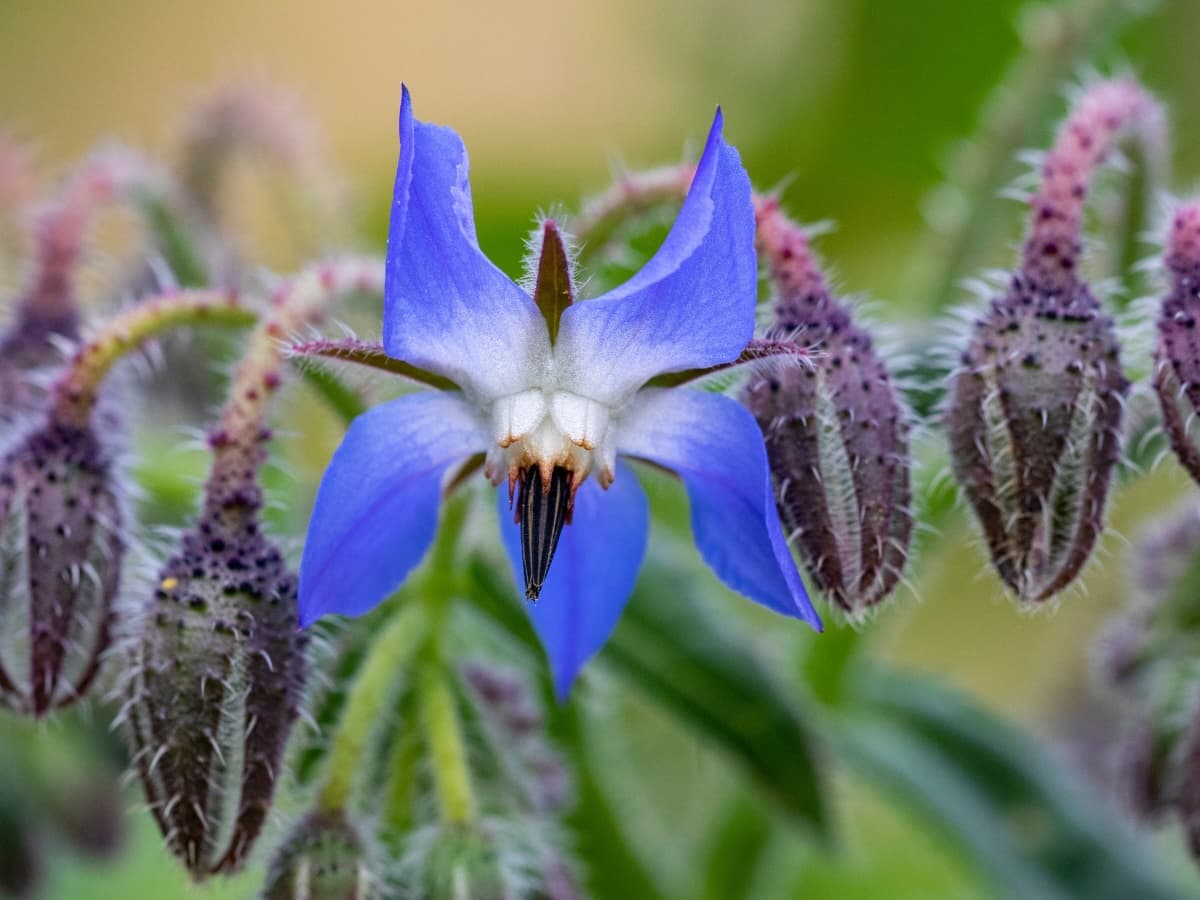
Scientific Name
Borago officinalis
Common Names
Borage, Starflower
Plant Family
Boraginaceae
Location
Native to the Mediterranean but now grown worldwide. Borage thrives in sunny gardens, poor soil, and wild borders. It self-seeds easily and will often return year after year once established. Bees love it, and it’s a frequent visitor in pollinator gardens.
Description
A bristly, soft-stemmed annual growing up to 2–3 feet tall. It has large, hairy leaves and striking blue, star-shaped flowers that nod downward and seem to glow in sunlight. The plant is cooling and mucilaginous, and its flowers are edible with a light cucumber flavor.
Uses
Borage is traditionally used for adrenal support, grief, and emotional exhaustion. "To gladden the heart" is an old phrase associated with it. It's also demulcent — soothing to mucous membranes — and mildly diuretic. It supports the lungs in dry coughs and soothes hot inflamed tissue. Externally, it's used to soothe red, dry, or irritated skin. Also sometimes used to support lactation.
Energetics
Cooling, moistening, mildly sweet. Gently uplifting to spirit and body, especially when the heart feels heavy or the system overheated.
Parts Used
Fresh leaves (young), flowers, and sometimes seeds (for oil)
Constituents
Mucilage, flavonoids, trace pyrrolizidine alkaloids (in leaves), gamma-linolenic acid (in seed oil), choline, potassium salts
Dosage
- Infusion (leaves/flowers): 1–2 tsp per cup, steep 10–15 min
- Tincture (1:5, 40% alcohol): 20–40 drops, 2–3x/day
- Borage seed oil: 500–1000 mg daily (as supplement for skin/hormonal support)
- External use: Fresh poultice, infused oil, or cooled tea for compresses
Notes on Use
Use borage mostly for emotional exhaustion — especially the kind that comes after caregiving, long illness, or grief. It gives a soft, restoring kind of strength. The flowers are also beautiful in teas and salad — they lift the mood visually and energetically. The leaves are very mucilaginous and good for inflamed tissues but can be a little harsh if too mature (they get hairy and rough). Borage oil is fantastic for eczema or hormonal skin issues.
Harvesting
• Leaves and Flowers: Harvest fresh throughout the growing season, preferably early in the day. Use young leaves to avoid excessive hairiness.
• Seed: Collected late summer for oil extraction or propagation.
Contraindications
Use internal leaf preparations in moderation due to trace pyrrolizidine alkaloids (which may affect the liver in large or long-term doses). Avoid in pregnancy unless using seed oil. The seed oil is safe in moderate supplemental doses.
Recipes
- Cooling Grief Tea: Borage flower, lemon balm, rose, oatstraw
- Soothing Skin Infusion: Borage leaf, calendula, plantain — used as a compress or rinse.
- Hormonal Skin Blend: Borage seed oil with evening primrose and vitamin E